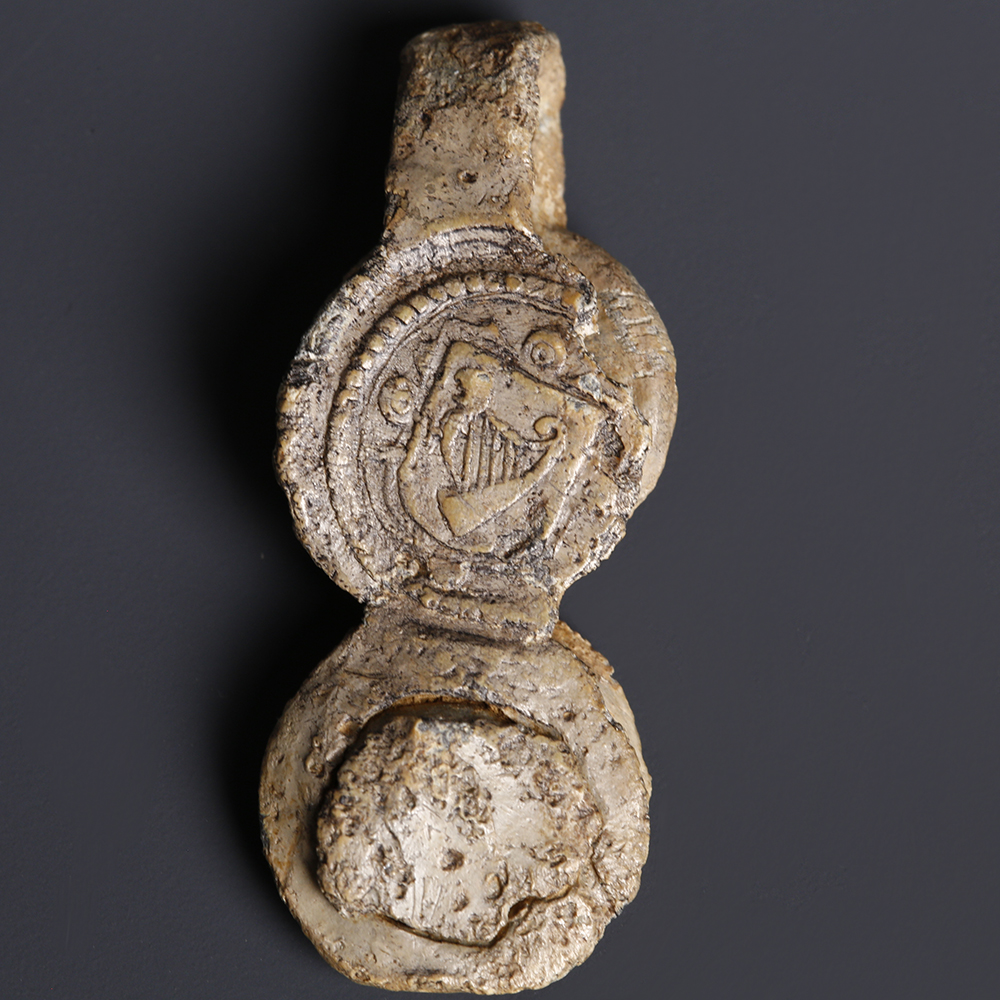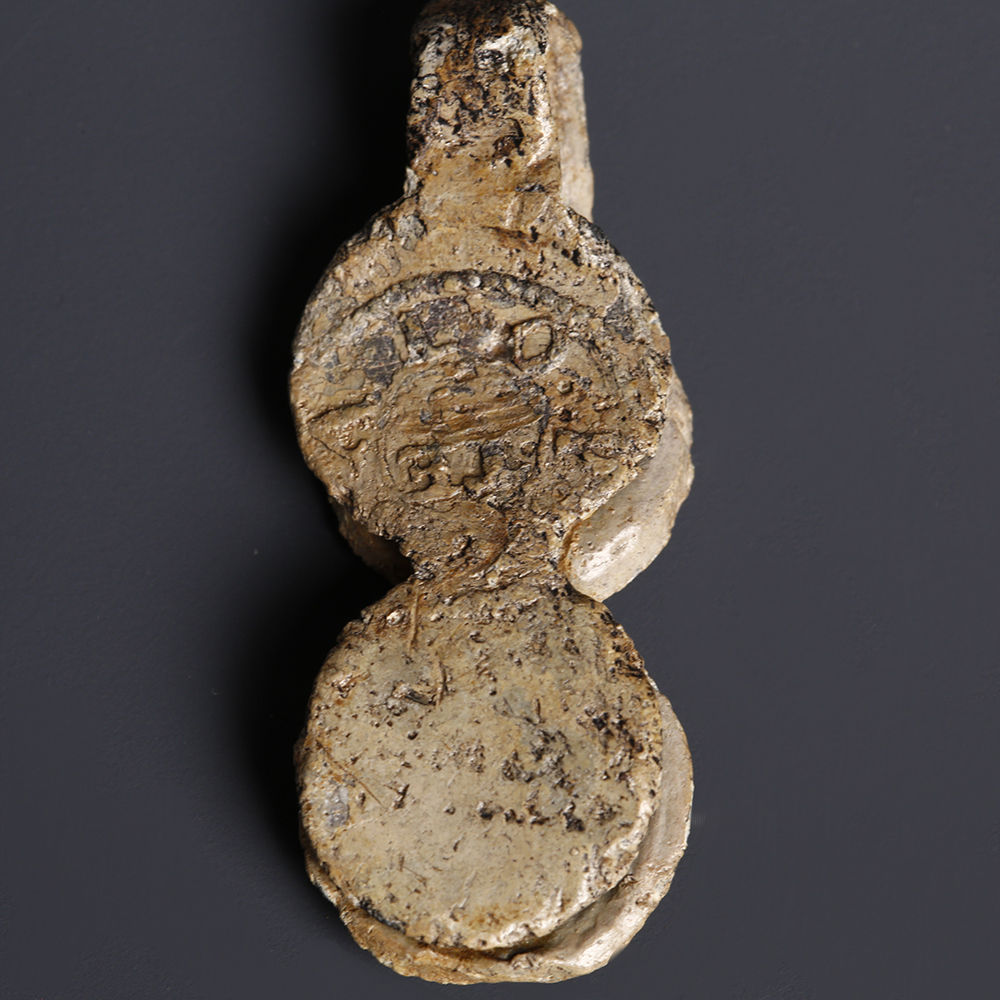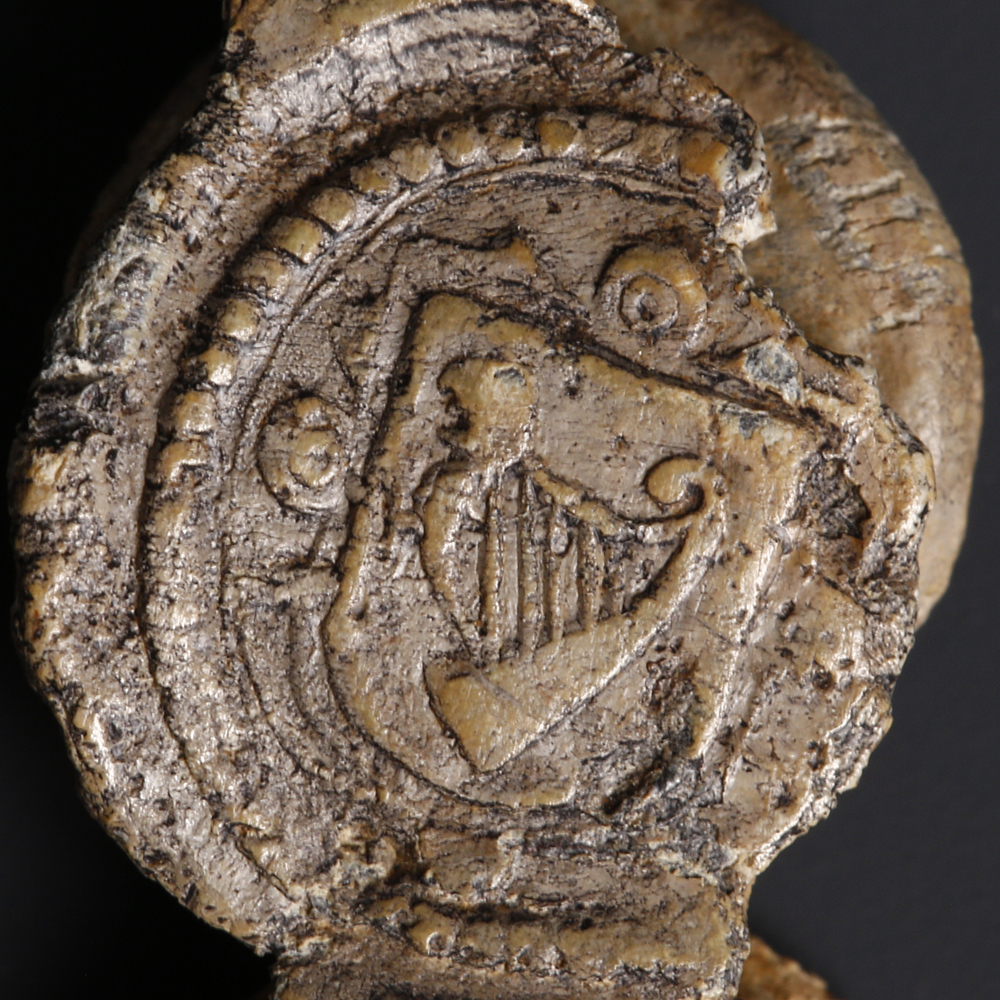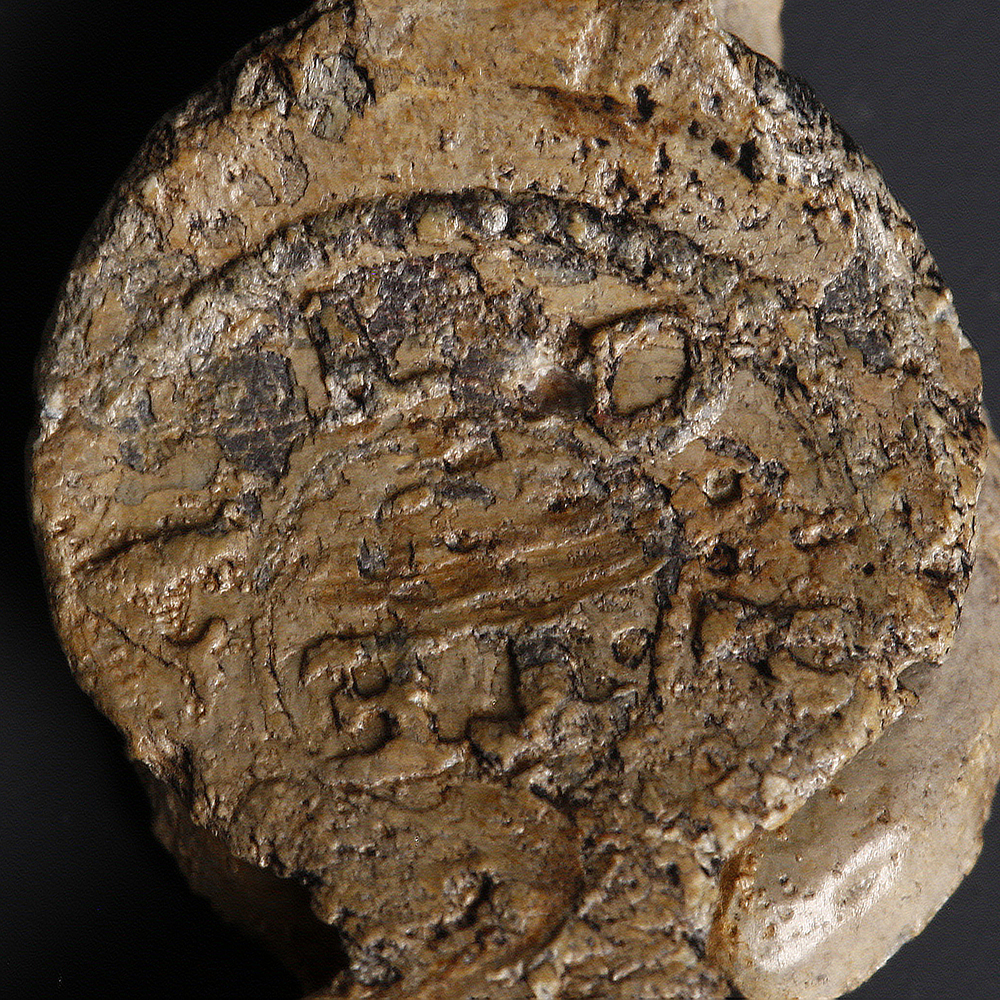Lead cloth seals were used to regulate cloth beginning from the medieval period. The exact starting date of this practise is uncertain, however the first regulations on cloth began with the Assize of Measures, circa AD 1197. Cloths were required to confirm to a standard width and be of good quality. As the system evolved a position of authority was created for the measuring of cloth and to maintain standards were met. This role was known as the ‘office of alnager’. Evidence from 1380 shows the use of lead seal to mark cloth but most likely they were in use for some time before this date. The seal was attached to each piece of cloth, providing evidence that the cloth conformed to standards. Almost every type of cloth required a seal. A blank seal would have been enclosed around the cloth and two dies pressed into blank lobes.
The Merchant’s mark was a distinctive symbol, used to brand items and property, instantly recognisable to all citizens, alike to the modern day logo. These marks related to both the individual and the trade as a whole. The Irish harp (cláirseach) is a well documented symbol of Ireland. Representing nationalism, the musical instrument later became an emblem of resistance to the crown and British monarchy. As British influence was imposed, the token of Ireland became outlawed and forgotten.



